AMD's Fall Refresh: New Phenom II and Athlon II CPUs Balance Price and Performance
by Anand Lal Shimpi on September 21, 2010 2:52 AM EST- Posted in
- CPUs
- AMD
- Phenom II X6
- Athlon II
Overclocking
Global Foundries has been hard at work. While most of its public discussion has been about ARM and 28nm, AMD’s foundry partner continues to crank out 45nm SOI parts. Overclocking in general has improved on AMD’s CPUs as GF’s 45nm process is fairly mature.
When I reviewed the Athlon II X2 255 in January I indicated a 3.7 - 3.8GHz overclock was within reason. My Athlon II X2 265 sample managed 3.89GHz:
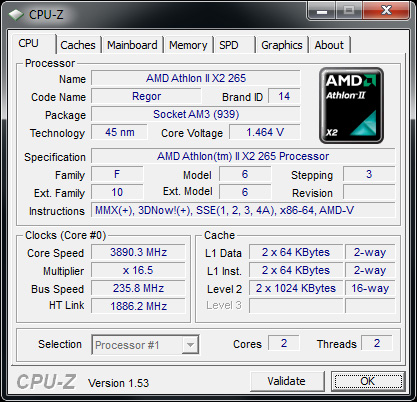
Moving up the totem pole the Athlon II X3 450 topped out at 3.692GHz:
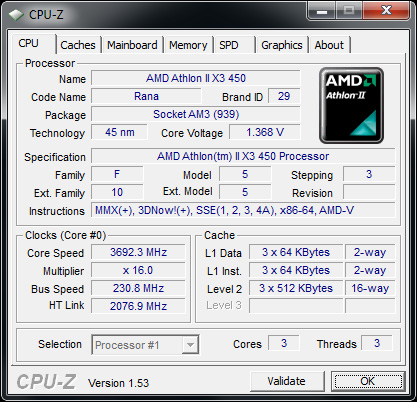
The Athlon II X4 645 managed a 22% overclock to 3.789GHz:
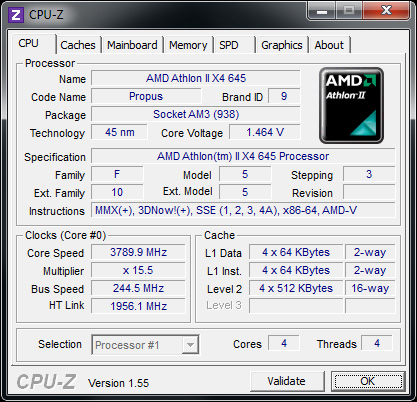
Our best overclock with the stock cooler came from the Phenom II X4 970 at 4.1GHz:
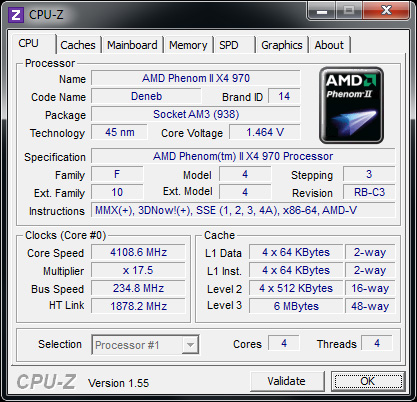
Finally we have the 1075T that managed a 4GHz overclock, although I wasn't convinced of the overclock's stability in my tests - dropping down to 3.9GHz is probably a safer bet in this case:
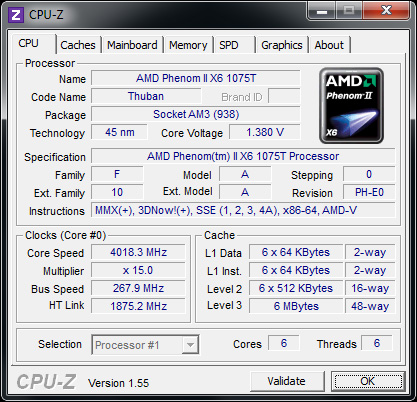










98 Comments
View All Comments
iwodo - Tuesday, September 21, 2010 - link
All these Athlon II and Phenom, are expected to complete against Sandy Bridge next year?( Since Bulldozer are not coming to Fusion type and low end CPU )
SandyBridge is coming to kick some ass then by the looks of it. Higher IPC, Higher Clock speed, lower Idle power, better Hyper Threading......
Apart from Fusion i am not excited by AMD's roadmap at all.......
Dark_Archonis - Tuesday, September 21, 2010 - link
I believe Llano is supposed to compete with Sandy Bridge, but the problem is Llano is coming to market later than Sandy Bridge. Until Llano comes, yes these Athlon IIs and Phenom IIs will be forced to compete with Sandy Bridge, and they are going to lose badly.Even when Llano comes, it's not supposed to be a big performance increase, so I think Sandy Bridge will rule the mainstream market.
As for Bulldozer, it will have to go up against Intel's socket 2011 Sandy Bridge models that are likely to be without integrated graphics. These models are rumored to have up to 8 physical cores, 40 lanes of PCI-E 3.0, and quad-channel DDR3.
Eeqmcsq - Tuesday, September 21, 2010 - link
On the Video Encoding & Data Archive page, the graph for Par2 is in reverse. It has the Athlon II X2 255 at the top and the Core i7 860 at the bottom.Makaveli - Tuesday, September 21, 2010 - link
Eeqmcsq the graph is correct.Look under the heading of the graph....
(Lower is better)
Eeqmcsq - Tuesday, September 21, 2010 - link
Yes, I saw that. But Anand usually puts the best CPU at the top, not at the bottom. See the previous review for the Core i7 970.http://www.anandtech.com/show/3833/intels-core-i7-...
hangfirew8 - Tuesday, September 21, 2010 - link
You write: "The Phenom II X6 1075T is an interesting chip as you get a lot of compute but it's only useful in heavily threaded apps."I strongly disagree, unlike you are calling virtualization "apps".
These chips are a godsend to developers, testers and sales who are running entire tiles of software. Need to test your client on XP, Vista and Windows 7? Need to run a web application server on Windows and an Oracle database backend on Linux? Need to do all of these at the same time? This is what a Hex Core chip is made for, not running a single heavily threaded app on a single O/S.
I'd like to see an AT Bench benchmark that covers this sort of application. I'd like to see how comparably priced Intel CPU's do versus AMD chips. I'm thinking this would be a huge differentiator between HyperThreading and actual cores, but I'd like to see the numbers before making any claims.
haplo602 - Tuesday, September 21, 2010 - link
this is not quite comparable. on moderately IO dependant workloads (your web server/oracle db example), HT will do just fine. on compute dependant applications with little memory access, HT will bottleneck. However you will hardly run 4-6 compute dependant VMs at once every time.hangfirew8 - Wednesday, September 22, 2010 - link
I agree on your HTT assessment.BTW I mean "unless" not "unlike". Where's the edit button?
Can I get a reply from AT on VM? Can we stop treating every desktop chip as a gaming candidate-only chip and get some kind of desktop VM benchmark going here?
I'm thinking running one per VM: compile/link/install (push application from dev VM to web server VM over virtual network), web server with integrated JAVA application, three web clients, and a database backend. Run a mix of Linux & Windows, 32 and 64 bit O/S's. The app being compiled doesn't even have to be the app being run.
Accord99 - Tuesday, September 21, 2010 - link
There's some tests done by the IT side of Anandtech:http://www.anandtech.com/show/2774/10
Relatively speaking, more cores offers a bigger boost than Hyperthreading, but a single Nehalems core is much more powerful than a AMD K10 core.
hangfirew8 - Wednesday, September 22, 2010 - link
Yes I know they can do it, but we have no data on how similarly priced desktop chips compete. HTT versus Cores is only one aspect. I want to see the AMD hex chips stretched against Intel quad cores in VM's and shake out the bang for buck. AT's attitude about hex cores only being useful for single heavily threaded apps just doesn't match how this chip is being marketed or how it is being used in the field.AT should realize that a lot of their PC gaming readers have daytime jobs not just as server administrators, but as software developers and testers. Management comes to us for advice and no one is providing us with the data to make informed decisions. 7Zip benchmarks are fine but give us a software development lifecycle benchmark using VM's, give us data on what we are already working with for several years in real life (work). Give us a benchtop VM benchmark! Please!